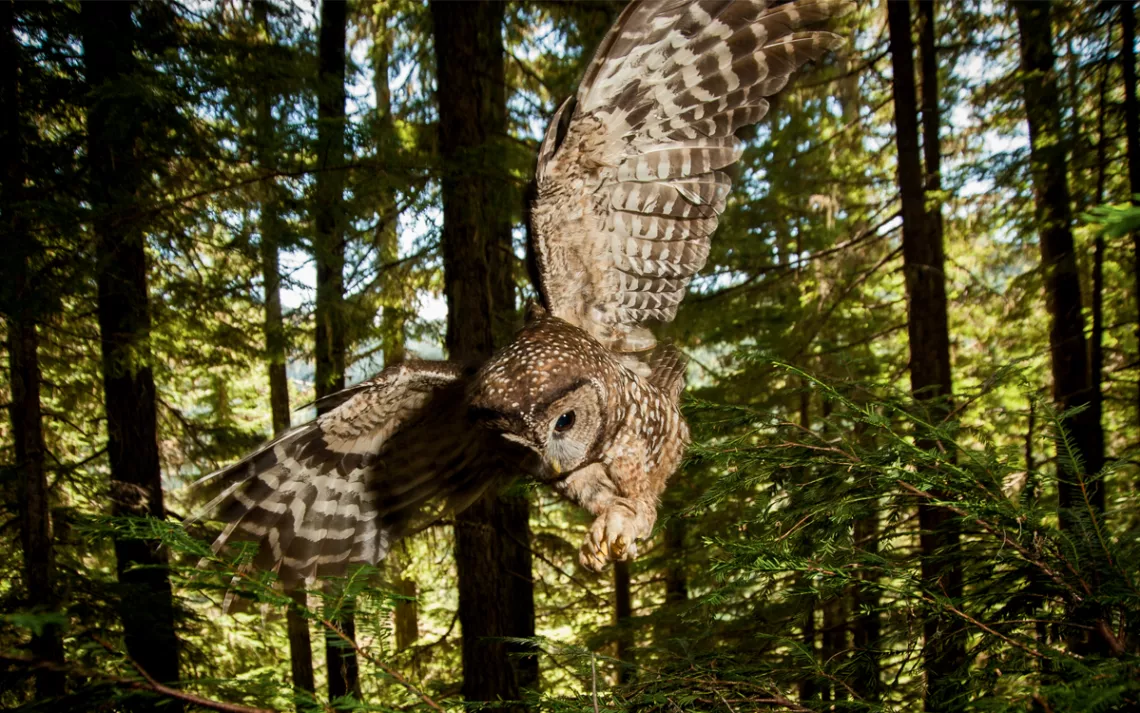The Spotted Owl and the College Student
The interspecies conversation that saved Pacific Northwest old growth

Photo by François-Xavier "Fix" De Ruydts
In 1969, an undergrad working a summer job in Oregon's Willamette National Forest heard a strange hooting coming from the woods—sort of like a dog's bark. He made the same sound back. The creature responded. After a few nights of this back-and-forth, a pair of owls flew down and landed in front of his cabin.
The student, Eric Forsman, learned that Strix occidentalis—the spotted owl—was an enigma. There was no scientific record of where it nested, what it ate, or really anything about it. He began driving down old logging roads, calling into the forest. Sometimes he would look up and see one following him through the woods as though it was checking up on him. His 1975 master's thesis noted that he found the owls almost exclusively in old-growth coniferous forests.
A 1981 US Forest Service report concluded that if logging on Forest Service land continued at its current rate, most of the old-growth national forest in the Pacific Northwest would be gone by 2020. Not everyone saw that as a bad thing. The Forest Service was, after all, part of the Department of Agriculture; many forest managers saw trees as a crop and felt that their job was to harvest as much wood as possible.
If the temperate rainforests of the Pacific Northwest were replaced with tree plantations, many species other than spotted owls—including salmon, elk, woodpeckers, and bats—would be devastated. But because of the research done by Forsman and other scientists, the data for the spotted owl was the most conclusive: If the old-growth forest disappeared, or even if it became fragmented, the owl would become extinct.
Since the Forest Service's own rules required it to manage the forests in ways that didn't lead to vertebrate extinctions, the spotted owl in 1989 began starring in legal challenges to agency logging plans. Ultimately, a judge threatened to bring logging in Pacific Northwest old-growth forests to an abrupt halt unless the Forest Service came up with a management plan that would not lead to the spotted owl's demise. The old growth got protected, and the spotted owl with it.
Despite this, the spotted owl's numbers are declining, possibly because of the salvage logging that is allowed in the wake of wildfires and definitely as a result of barred owls muscling into their territory. (Spotted owls may prove better at protecting the forest than the forest is at protecting them.) But, while a lot of terrible things happened in 2020, the future laid out in a report 40 years earlier did not come to pass, in part because an owl heard a stranger call in the woods and answered.
This article appeared in the Fall quarterly edition with the headline "The Phantom Hoot."
Did You Know?
Spotted owls do not build nests. They prefer old raptor or squirrel nests, or a nice hole in a tree.
Wildfires are not a factor in the spotted owl's decline, which suggests that the owls evolved with (and are still adapted to) forest fires.
 The Magazine of The Sierra Club
The Magazine of The Sierra Club



